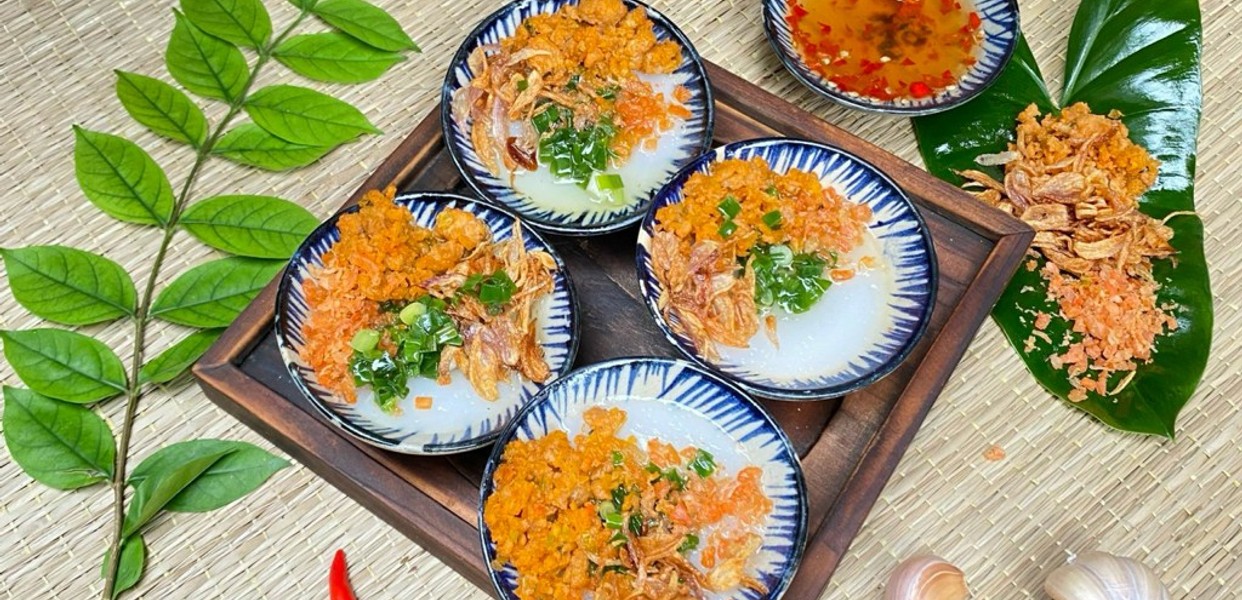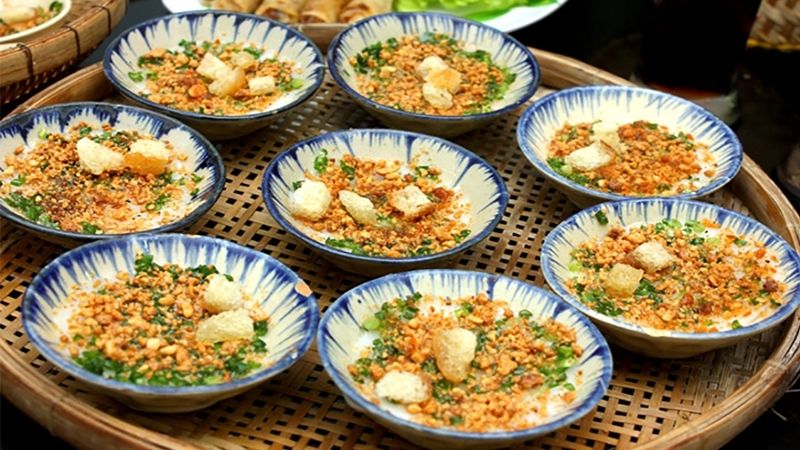Bánh Bèo Chén
1. Overview and Distinctive Features
Bánh bèo chén, a beloved Vietnamese dish, is especially popular in Vũng Tàu for its soft texture, rich toppings, and bite-sized presentation. Served in small ceramic cups (chén), these steamed rice cakes are a delightful combination of simplicity and flavor. In Vũng Tàu, bánh bèo reflects the coastal city’s culinary creativity, often featuring seafood-based toppings and enhanced local spices that make each bite a burst of savory goodness.

2. Key Ingredients
The base of bánh bèo is a smooth mixture of rice flour and water, which is steamed to form a soft, slightly chewy rice cake. On top, the traditional toppings include a combination of minced shrimp, crispy fried shallots, mung bean paste, and sometimes shredded pork rinds. In Vũng Tàu, it’s common to see variations with minced squid, fish floss, or dried shrimp, reflecting the city's access to fresh seafood.
3. How It’s Cooked
The batter is poured into small porcelain or ceramic dishes and steamed until set. Meanwhile, the shrimp (or other toppings) are sautéed with garlic, annatto oil, and a touch of seasoning. The rice cakes are then removed from the steamer, topped with the savory mixture, and garnished with scallion oil and crispy shallots. A small bowl of fish sauce with garlic, chili, and lime is always served on the side for dipping or pouring over the cakes.
4. Serving and Enjoying
Bánh bèo chén is usually served in sets of 6 to 10 tiny cups, still warm in a bamboo tray. Diners use a small spoon to scoop each one out, optionally adding a spoonful of the sweet and salty fish sauce. The contrast of textures – soft cake, crunchy shallots, and creamy mung beans – combined with the bold, umami-rich toppings, creates an incredibly satisfying street food experience. It’s a dish often shared among friends or family as a snack or light meal.

5. Cultural Significance
Though bánh bèo originates from Central Vietnam, Vũng Tàu locals have embraced and adapted it, making it a must-try street food for both residents and tourists. It’s commonly found in small food stalls or coastal markets, especially in the late afternoon when people gather for casual bites. The dish’s affordability, elegance, and flavor make it a cultural treasure in the city’s vibrant food scene.

